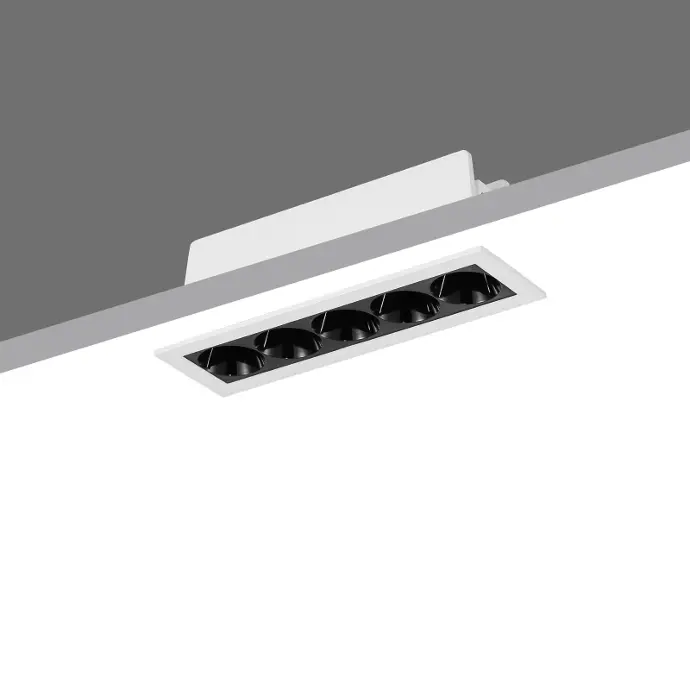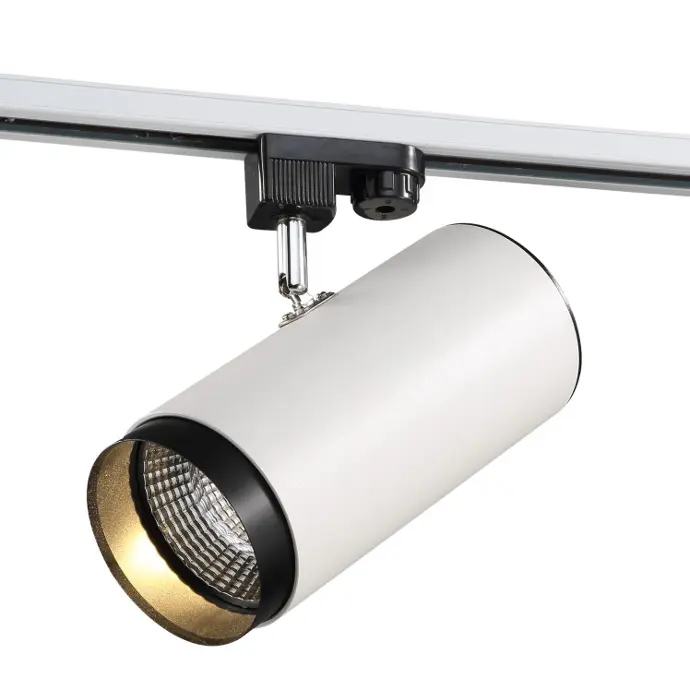Architectural Lights
Sourcing Top Quality Architectural Lights in China: A Professional Perspective
In the realm of architecture and design, lighting is a fundamental element that shapes both the aesthetics and functionality of a space. It plays a crucial role in accentuating the architectural beauty of buildings while significantly enhancing the user experience within those environments. Architectural lighting, in particular, represents a specialized category that merges art and science to create visually striking, energy-efficient, and sustainable settings. This unique blend allows designers to craft spaces that are not only beautiful but also practical and environmentally conscious.
China has established itself as a global manufacturing powerhouse, emerging as a leading player in the production and export of high-quality architectural lighting solutions. The country’s vast manufacturing capabilities enable it to offer an extensive range of lighting options that cater to diverse styles and preferences, from contemporary designs to traditional fixtures. This article delves into the intricacies of sourcing architectural lights in China, highlighting the diverse array of available products, the key benefits associated with Chinese manufacturing, and the latest trends and innovations shaping this dynamic industry. By exploring these aspects, architects and designers can gain valuable insights into how to effectively leverage China's resources to enhance their projects and meet modern design demands. Ultimately, understanding these elements will empower professionals to create impactful spaces that resonate with users while embracing cutting-edge lighting solutions.
What are Architectural Lights?
Architectural lights are lighting fixtures specifically designed to complement and enhance the architectural elements of buildings, both inside and out. Unlike standard lighting, which is primarily focused on illumination, architectural lighting is intended to highlight specific design features, such as facades, sculptures, entrances, or landscaping. This type of lighting is used to create a visual impact, enhancing both the aesthetic and functional aspects of a building.
Architectural lights come in various forms, including:
- Wall-mounted fixtures: Ideal for accentuating the exterior or interior walls of buildings.
- Floodlights: These provide a wide, uniform beam of light, often used to illuminate large areas like building exteriors or open spaces.
- Spotlights: With a narrower beam, spotlights are used to focus attention on specific features, such as artwork, columns, or landscape elements.
- Strip lighting: Used both indoors and outdoors, strip lighting can be installed along pathways, staircases, or architectural elements to create dramatic effects.
- Downlights and uplights: These fixtures can be embedded in floors, ceilings, or walls, casting light in specific directions to achieve a dynamic visual impact.
Incorporating architectural lighting into a project requires careful consideration of several factors, such as color temperature, beam angle, brightness level (measured in lumens), and energy efficiency. Each of these factors contributes to the overall design and ambiance of the space, influencing how the space feels and functions for its occupants.
Moreover, the proper installation of architectural lights is critical to achieving the desired effect. Whether the goal is to create a sense of warmth, emphasize a building’s structure, or enhance safety and security, the placement of lights and the angles at which they illuminate key features must be strategically planned.


Benefits of sourcing Architectural Lights in China
China has long been recognized as the world’s largest producer and exporter of various lighting solutions, including architectural lights. For architects, interior designers, and procurement specialists, sourcing lighting from China offers several key advantages:
Variety and Diversity: One of the most attractive aspects of sourcing architectural lights from China is the sheer variety of options available. Chinese manufacturers produce a wide range of lighting solutions to cater to various tastes, budgets, and design requirements. From minimalist modern designs to more ornate and intricate fixtures, China’s production capabilities ensure that virtually any lighting need can be met.
Competitive pricing: Price is often a deciding factor in procurement decisions, and China’s competitive pricing structure makes it a popular choice for businesses worldwide. Chinese manufacturers can offer lower prices due to economies of scale, lower labor costs, and streamlined production processes. This allows architects and developers to access high-quality lighting solutions at a fraction of the cost compared to suppliers in Europe or North America.
Quality assurance: While competitive pricing is a significant advantage, it does not mean that quality is compromised. Many Chinese manufacturers adhere to strict international quality standards, including certifications such as ISO 9001. Additionally, advancements in technology have enabled Chinese producers to craft lighting solutions that are both visually appealing and durable. From energy-efficient LEDs to corrosion-resistant outdoor fixtures, quality is a key focus for many Chinese manufacturers.
Customization: Chinese manufacturers often offer bespoke services, allowing clients to customize their lighting fixtures to meet specific project requirements. Whether it’s adjusting the size, color, or material of a fixture, Chinese suppliers are known for their flexibility and ability to cater to unique design specifications.
Fast Production Times: Thanks to China’s highly efficient manufacturing processes, production lead times are often much shorter than in other regions. This can be especially advantageous for large-scale projects that require tight timelines.
Technological Advancements: China has invested heavily in the research and development of new technologies for the lighting industry. As a result, Chinese manufacturers are at the forefront of innovations such as smart lighting systems, energy-efficient LEDs, and environmentally sustainable fixtures.
By considering these benefits when sourcing architectural lights from China, professionals can confidently make informed decisions for their projects while achieving exceptional results at a fraction of the cost elsewhere.
Procurement solutions for architectural lights in China
When sourcing architectural lights in China, it is essential to have a solid procurement strategy in place. Here are some key solutions to consider:
- Engage with a Sourcing Agent: If you are unfamiliar with the Chinese market, consider hiring a professional sourcing agent who specializes in architectural lighting. A sourcing agent can help you identify reliable suppliers, negotiate better prices, handle logistics, and ensure that the products comply with international standards.
-
Request Product Samples: Before placing a large order, always request samples from potential suppliers. This allows you to assess the quality and functionality of the lights firsthand. It also gives you an opportunity to test how the lights will perform in your specific project environment.
- Develop Long-Term Relationships: Building strong relationships with Chinese manufacturers can yield long-term benefits, such as better pricing, priority production slots, and faster shipping times. By establishing trust and maintaining open communication with your suppliers, you can ensure a smoother procurement process in the future.
-
Stay Informed About Industry Trends: The architectural lighting industry is constantly evolving, with new trends and innovations emerging every year. By staying informed about the latest advancements, you can ensure that the lights you are sourcing are both cutting-edge and future-proof.
Key Considerations When Sourcing Architectural Lights from China
While the benefits of sourcing architectural lights from China are numerous, there are also certain considerations that must be taken into account to ensure a smooth and successful procurement process. Below are some important factors to consider:
- Supplier Research: Given the vast number of manufacturers in China, it is crucial to conduct thorough research to identify reliable suppliers. Look for companies with a proven track record, positive customer reviews, and verifiable certifications. Websites such as Alibaba and Made-in-China can be valuable resources for finding potential suppliers, but due diligence is still required to ensure product quality and reliability.
- Quality Control: Ensuring that the lighting fixtures meet your project’s specifications is vital. It’s advisable to request product samples before placing a large order. This allows you to assess the materials, design, and functionality of the lights firsthand. Additionally, consider hiring third-party quality control inspectors who can visit the manufacturer’s facility to conduct thorough checks.
- Compliance with International Standards: Ensure that the architectural lights you are sourcing comply with the necessary international standards and certifications for safety, durability, and energy efficiency. This is especially important for lighting fixtures that will be installed in commercial spaces, where compliance with local building codes and safety regulations is mandatory.
- Shipping and Logistics: China is geographically distant from many of its global clients, which means that shipping and logistics are important considerations. Make sure to account for lead times, potential delays, and shipping costs when planning your procurement strategy. Working with an experienced sourcing agent or freight forwarder can help simplify this process and ensure that your lighting fixtures arrive on time and in good condition.
- Negotiation and Payment Terms: Chinese manufacturers are generally open to negotiation, especially for large orders. However, it is important to clearly define payment terms, shipping responsibilities, and return policies before finalizing any deal. This helps avoid misunderstandings and ensures that both parties are aligned on expectations.
Trends and Innovations: Staying Ahead of the Curve in the Architectural Lighting Industry
Trends and Innovations in the Architectural Lighting Industry
Energy Efficiency
As concerns about climate change and energy consumption continue to grow, energy efficiency has become a top priority in the architectural lighting industry. LED lighting, in particular, has emerged as the leading solution for energy-efficient lighting. LEDs consume significantly less power than traditional incandescent bulbs and have a longer lifespan, making them a more sustainable and cost-effective option.
In addition to LEDs, manufacturers are increasingly focusing on sustainable materials and design principles. This includes using recyclable materials for light fixtures, designing fixtures with disassembly in mind (to facilitate recycling), and reducing the overall environmental impact of production processes.
Integration of Smart Technology
The integration of smart technology into lighting systems is another major trend. Smart lighting systems allow users to control light intensity, color temperature, and even the direction of light through mobile apps or voice commands. These systems can be programmed to respond to specific conditions, such as changes in daylight or occupancy, ensuring optimal lighting at all times.
Moreover, smart lighting systems can be integrated with building automation systems (BAS), allowing for centralized control of all lighting fixtures within a building. This not only enhances user experience but also increases energy efficiency by ensuring that lights are only used when necessary.
Minimalist and Modern Designs
Minimalist design continues to dominate the architectural lighting industry, with clean lines, neutral colors, and simple shapes being favored for both indoor and outdoor fixtures. This trend is particularly popular in modern commercial spaces, where the emphasis is on creating a sleek and unobtrusive lighting design that complements the overall architecture.
Customization and Personalization
As design trends become more varied, there is growing demand for customizable lighting solutions. Manufacturers are increasingly offering bespoke services, allowing architects and designers to personalize fixtures to meet their specific needs. Whether it’s choosing the material, color, or size of a fixture, customization ensures that the lighting aligns perfectly with the overall design vision.
Wireless Charging and Multi-Functionality
A growing innovation in the lighting industry is the inclusion of wireless charging capabilities within lighting fixtures. By incorporating wireless charging pads into table lamps, floor lamps, or bedside lights, manufacturers are creating multi-functional products that cater to the needs of modern users who rely heavily on their electronic devices.
Conclusion: Unlocking the Potential of Architectural Lighting from China
Sourcing architectural lights from China presents numerous advantages for architects and designers, including cost savings, a wide variety of products, and customization options. The competitive pricing offered by Chinese manufacturers allows businesses to acquire high-quality lighting solutions without exceeding their budgets. Additionally, the extensive range of styles—from energy-efficient LEDs to smart lighting systems—ensures that designers can find the perfect fit for their projects. By partnering with reliable suppliers and leveraging China's manufacturing capabilities, professionals can enhance their design visions while maintaining functionality.
Moreover, the architectural lighting industry in China is characterized by continuous innovation, with trends emphasizing energy efficiency and sustainable materials. This evolution not only addresses environmental concerns but also aligns with modern design principles. Implementing a strategic procurement plan enables businesses to navigate the complexities of sourcing while maximizing the benefits of Chinese manufacturing. By staying informed about industry trends and collaborating with reputable suppliers, architects and designers can create visually stunning spaces that leave a lasting impact. Ultimately, sourcing architectural lights from China allows for the realization of ambitious design concepts, transforming spaces into captivating environments that meet contemporary demands.
2,000+ Architectural Lights are currently in our catalogue
Download it now














